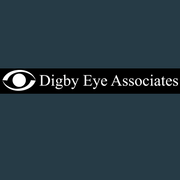Contact Lens Corner: Comparing Bi-Weekly & Daily Contacts
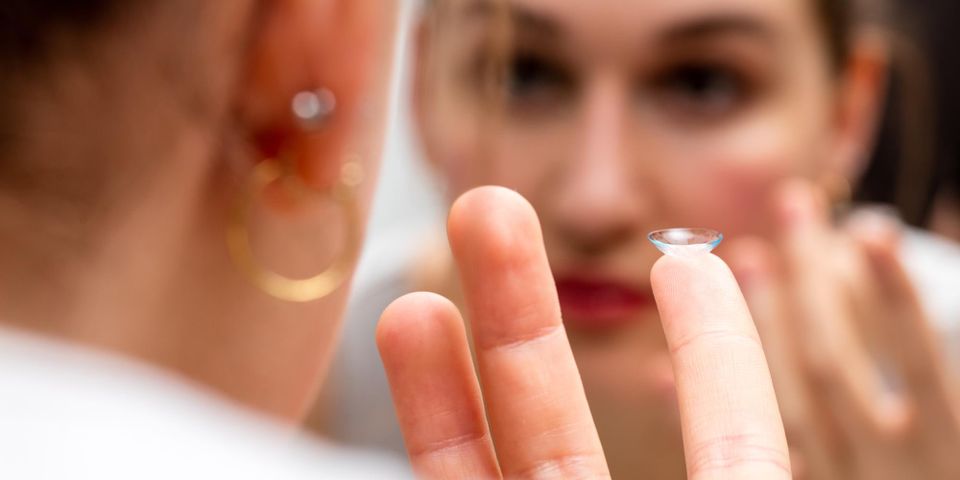
Contact lenses were first introduced to the market around 1940, but the original prototypes are far removed from the technologically advanced lenses 45 million Americans wear today. As manufacturers hone their process, they’ve overcome considerable challenges to deliver treatment that’s effective, safe, comfortable, easy to use, and affordable. Here’s a guide that helps users weigh the benefits between bi-weekly and single-day replacements, two of the most common forms of contact lenses people use today.
Bi-Weekly vs. Daily Contact Lenses
The year is 1995. In one corner, we have the defending champion for contact lens wearers: two-week and monthly disposable modalities. Disposable lenses were revolutionary when they were first released in the late ’70s; before then, people used conventional (or annual replacement) contact lenses, which were typically uncomfortable and vulnerable to infection.
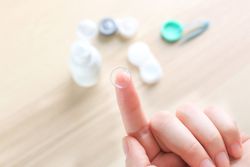 In the other corner, the “rookie” daily disposable lens launches onto the market. The daily disposable lens permitted users to enjoy fresh, sterile contacts each and every day—but this convenience came with a few trade-offs, including the cost. It was an uphill battle convincing patients to switch to a more expensive treatment after successfully using bi-weekly contacts for decades.
In the other corner, the “rookie” daily disposable lens launches onto the market. The daily disposable lens permitted users to enjoy fresh, sterile contacts each and every day—but this convenience came with a few trade-offs, including the cost. It was an uphill battle convincing patients to switch to a more expensive treatment after successfully using bi-weekly contacts for decades.
However, even seasoned wearers were surprised to find daily contacts to be convenient, more comfortable, and generally safer than other contacts designed for long-term wear. Daily-use contact lenses were game-changers for people with sensitive eyes, allergies, dry eyes, or reoccurring infections. Because allergens and environmental debris don’t build up on the surface, daily disposable contacts raise fewer concerns about contamination. It’s also easy to keep track of your schedule with daily lenses; wearers know to start fresh each morning with a new pair. You don’t even need to soak the lenses in a solution, so the routine is incredibly low-maintenance. They’re simple, clean, and healthy. The rookie skyrockets to popularity.
Technological Advances for Contact Lenses
Move to 2002. The monthly and two-week lenses become available in a groundbreaking new material—silicone hydrogel—which increases the oxygen permeability. Oxygen plays a critical role in wearer comfort; the delicate blood vessels in your eye can grow in response to oxygen deprivation, ultimately leading to irritation, redness, and, in severe cases, scarring and partial vision loss. With greater oxygen intake, the lenses become more comfortable and effective, even for people who wear contacts for extended periods. With this latest innovation, patients started switching back to bi-weekly contacts lenses instead of the daily disposables.
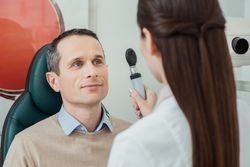 But it was only a matter of time before manufacturers adapted the material to a disposable form. In 2010, companies released a breathable, silicone hydrogel lens that’s available as a daily-wear option. Now these contacts can even be used by patients with astigmatism or bifocal/multifocal corrections. This ultimately means that contact lens users have more options than ever, with the ability to enjoy comfortable, breathable, and clean soft contact lenses in daily or bi-weekly forms.
But it was only a matter of time before manufacturers adapted the material to a disposable form. In 2010, companies released a breathable, silicone hydrogel lens that’s available as a daily-wear option. Now these contacts can even be used by patients with astigmatism or bifocal/multifocal corrections. This ultimately means that contact lens users have more options than ever, with the ability to enjoy comfortable, breathable, and clean soft contact lenses in daily or bi-weekly forms.
FAQ About Soft Contact Lens Technology in 2019
I have astigmatism. My doctor said soft contacts are not right for me because they don’t work with my prescription. Is that true?
Technology is always evolving, and toric contact lenses help people with astigmatism see better without the need for glasses. When you have astigmatism, you need to have varying prescription strengths for different parts of your eye. Toric lenses are weighted toward the bottom to keep the lens from rotating. This keeps the right prescription strength aligned with the portion of your eye that needs vision correction. Soft toric lenses are becoming more adept with time, so talk to your doctor to see if they could work for your particular needs.
I have bifocal lenses, and my doctor said this prescription is only available for monthly contacts. But I think daily contacts would work better for my routine. What should I do?
Advances in engineering make it possible for manufacturers to offer soft contact lenses at more affordable rates. This is even true for people who need multifocal or toric lenses. Talk to your eye doctor to see if you qualify for a daily contact prescription—you might be surprised to find new care options have recently been made available.
I don’t wear contacts all the time, and it doesn’t bother me to wear glasses instead. Why should I bother getting a prescription for contacts at all?
 Daily disposables are perfect if you plan to wear them occasionally for sports, an event, or travel. They’re a popular choice among people who alternate between glasses and contacts because it doesn’t take long to get used to the soft lens. These lenses typically come in 30- or 90-day supply packs, so you can order fewer total lenses that will last an entire year if you don’t wear them every day.
Daily disposables are perfect if you plan to wear them occasionally for sports, an event, or travel. They’re a popular choice among people who alternate between glasses and contacts because it doesn’t take long to get used to the soft lens. These lenses typically come in 30- or 90-day supply packs, so you can order fewer total lenses that will last an entire year if you don’t wear them every day.
I had to stop wearing contacts because my eyes felt gritty and dry. Is anything better now?
YES! Now that dailies are available in silicone hydrogel, even patients with dry eyes can comfortably wear contact lenses. One company makes a lens that has a hydrophilic or “water-loving” surface that mimics the tear film. You probably won’t feel the contacts at all!
Disposable daily contacts sound expensive. How can I make this work for my budget?
Daily contacts cost more than other replacement schedules. However, you’ll save in a few other areas. Daily-use contacts don’t need any cleaning agents or solutions. You’re also less likely to develop an infection or have to purchase moisturizing drops. And, ultimately, the expense is minimal: fresh, clear lenses cost about the same as a cup of coffee. The benefits of using sterile contacts every day far outweigh any cost difference, and you’ll get significant use out of your investment.
If you’re concerned about paying for your contacts, ask your eye doctor about rebates; often manufacturers extend special offers to clinics. These rebates can amount to $100–$200 back on an annual supply.
My contacts are fine. Why change?
Chances are you’ve probably bought a new phone within the last year or two, even if the original device still worked. We make updates to our devices all the time because we want to take advantage of new technology. Why shouldn’t the same approach apply to eye care treatments? Our eyes are something we can’t replace, and we have to do all we can to keep them healthy. It’s your doctor’s obligation to offer the best technology and experience to preserve your health. Part of fulfilling this obligation also means informing patients about their treatment options. The world of technology is rapidly changing, and embracing new ideas could help you in ways you never would have expected!
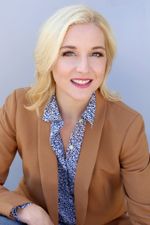 Dr. Suzanne Parker joined Digby Eye Associates in 2008. She is a North Carolina native and graduate of UNC-Chapel Hill, where she received a Bachelor of Science degree in Biology with minors in Chemistry and Spanish. She then attended Pennsylvania College of Optometry, where she received her Bachelor of Science in Optical Sciences and Doctor of Optometry degrees. She completed her residency in Ocular Disease at the University of Miami’s Bascom Palmer Eye Institute and gained extensive experience in the areas of retina, glaucoma, cornea, and neuro-ophthalmology.
Dr. Suzanne Parker joined Digby Eye Associates in 2008. She is a North Carolina native and graduate of UNC-Chapel Hill, where she received a Bachelor of Science degree in Biology with minors in Chemistry and Spanish. She then attended Pennsylvania College of Optometry, where she received her Bachelor of Science in Optical Sciences and Doctor of Optometry degrees. She completed her residency in Ocular Disease at the University of Miami’s Bascom Palmer Eye Institute and gained extensive experience in the areas of retina, glaucoma, cornea, and neuro-ophthalmology.
Dr. Parker is committed to providing comprehensive eye care services to a broad range of patients, including contact lens wearers, and she is fluent in Spanish. She is proficient in fitting the latest technologically advanced contact lenses on both healthy eyes and those with complicated conditions such as keratoconus, post-surgical and traumatized corneas.
In 2008, Dr. Parker became a Fellow of the American Academy of Optometry. She is a member of the American Optometric Association, the Scleral Lens Education Society, and the Contact Lens, Cornea, and Sports Vision sections of the AOA. Since 2008, she has served as the President of the Triad District of the North Carolina State Optometric Society. She serves on the Board of Trustees of the North Carolina State Optometric Society, and, in 2013, she was recognized as North Carolina’s Young Optometrist of the year.
She and her husband, Neill, and their two sons live in Greensboro and enjoy traveling and the culinary and fine arts; they are also avid followers of their alumni sports teams. She has a special interest in the Impressionist artists.
 To learn more about Digby Eye Associates and make an appointment with Dr. Parker in High Point or Greensboro, call (336) 230-1010 today. She provides comprehensive eye exams and fittings for contact lenses and glasses. She can also offer treatments for dry eye syndrome, cataracts, glaucoma, and more. Connect with the clinic on Facebook to receive more tips about your ocular health, or visit their website to learn about the contact brands they carry.
To learn more about Digby Eye Associates and make an appointment with Dr. Parker in High Point or Greensboro, call (336) 230-1010 today. She provides comprehensive eye exams and fittings for contact lenses and glasses. She can also offer treatments for dry eye syndrome, cataracts, glaucoma, and more. Connect with the clinic on Facebook to receive more tips about your ocular health, or visit their website to learn about the contact brands they carry.
About the Business
Have a question? Ask the experts!
Send your question

